What is a 180 gram record? Exactly as it
sounds, the actual vinyl record weighs 180 grams. Older records were pressed on
vinyl between 120 and 150 grams, which is much more flimsy and prone to warping
(not to mention flexi discs which I’ll have to cover on an entire separate
post).
I do find myself looking for 180 gram vinyl
when I am buying new releases or re-releases but only recently I started asking
myself why? I am writing this paragraph prior to doing any research on the
subject so I am just going strictly by my own opinion. The main reasoning for
me is that nothing pisses me off more than getting home with a used record, and
failing to notice the slight warp in the vinyl until I throw it on the
turntable. Slight warps in records bother me even more than scratches,
regardless if I can even hear a difference. I am such a perfectionist when it
comes to vinyl that it completely ruins the experience for me. (95% or more of
my vinyl is VG++ or better, it’s the musical OCD in me.)
Now let’s look into it and see if my “less
prone to warping”theory is the main advantage.
What can cause a record to warp?
One way is to have it stored improperly and
having the record leaning to one side. Think of a piece of paper on its side
packed on a shelf with lots of other paper pushing against it. This piece of
paper will stay straight. If you take some of the paper supporting it away from
the sides, the paper will naturally curve/bow as it is not rigid enough to stay
straight up and down without support. Now records are a little more rigid than
paper but thin records are definitely not completely rigid. If records are
leaning, after time this will cause the vinyl to bow and warp. 180 gram records
are more rigid and thicker; therefore do not warp as easily when they are
leaning. Think of cardboard in place of the paper, although it can still
curve/bow, it will not as easily since it is thicker.
(photo from: http://www.mikanet.com/museum/item.php?cat=5&index=21)
Another cause of warping albums is heat.
Vinyl melts! This is a proven fact. Throw one of your Olivia Newton John
records in the oven and see what happens. It will melt. So if you leave records
around heat they are going to get soft and warp, it is just a matter of time. A
few ways these records get in these hot situations is if you leave records in a
hot car in the summer, or if you leave records resting on top of your receiver
which generates heat. The 180g records being heavier and thicker tend to
withstand heat better. Now they are definitely still susceptible to melting;
however, you may have a little more time before this happens.
So yes, generally speaking the fact that
these 180 gram records are thicker and more rigid, they are less prone to
warping. So this is one advantage.
Now let’s look at another claim about 180
gram vinyl.
Some claim that the thicker LP’s have
deeper grooves which improve the sound, while others say that this is not the
case and they are all using the same press, therefore the same grove depth.
Some people also think that a deeper groove would give an advantage in sound.
So are grooves thicker on these 180 gram platters?
From the research I have done, the general
consensus is no!
Regardless of the thickness of an album,
the grooves are not deeper. The easiest way for me to explain why is to give a
quick background on how vinyl records are pressed.
First off you need a lacquer master.
What is a lacquer master?
It is an aluminum disc that is coated with
nitrocellulose lacquer (similar to nail polish) and which is 14 inches in
diameter. This is known in the business as an "acetate." This disc
has in it all of the grooves that are the final mastered sound of a recording.
This is done by a specialized "cutting" engineer. So this is the
“master record”per se. This has all the grooves that you want eventually
pressed into the vinyl.
Next up they need a metal stamper.
What is the stamper?
(photo from http://www.popsike.com/NirvanaNevermindMFSL-Metal-Master-Record-Stamper-WOW/160209303906.html)
They take the lacquer master and
electroplate it with tin, silver& nickel to create a metal stamper. The
stamper is a negative of the lacquer master. Think of pouring glue over a
record, letting it dry and then peeling it off. It would have the opposite of
the record grooves right? All these lines that would actually be sticking out
which would be the exact opposite of the grooves. So now imagine this is made
of metal and you have your stamper. This stamper is put in a record pressing
machine and stamps these grooves into a bunch of blank vinyl discs making these
records that I love so much!
Pages and pages could be written on the
process of pressing records but this is a quick rundown to give you an idea.
So now that we have a little background,
these grooves that are made in the lacquer master are not very deep. So saying
that a 180 gram record allows for a deeper groove is kind of an empty argument.
Normal records (say 140 gram) have plenty of room for deeper grooves. If deeper
grooves in fact did improve sound, they have plenty of room on thinner records
to make them deeper. We don’t need the extra space that 180 gram provides to
allow this.
There is a lot of discussion on this topic
back and forth on many online message forums. When it comes to message forums,
I do not take anybody’s responses as necessarily correct; however, it does give
me a great starting point on what to look for and a lot of time people post
backup information which is great.
The majority of folks on the message forums
concluded that this does not seem to be the case. Regardless of the thickness
of the vinyl, the groove depth tends to be the same.
I needed a little more concrete information
on this so I kept digging.
I found an interview with Ben Blackwell on www.collectorsweekly.com . Ben is
head of vinyl production at Jack White’s “Third Man Records”. He confirms that
all records have a standard groove depth, regardless if they are 180 gram vinyl
or the standard vinyl. He even goes on to say that if they did press deeper
grooves, our turntable would not be able to play the records correctly. Ben
states that the major advantage of 180 gram vinyl is that it is less prone to
warping. Which is my theory!
So basically, yes, grooves can be cut
deeper, depending on how deep the grooves are made on the master lacquer, but
this proves no advantage to 180 gram vinyl as there is plenty of room between
the both sides of a record (even on the thinner ones) to allow for deeper
grooves.
Even if some quality of sound can be
attributed to the weight of the vinyl, what is really going to make a record
sound great or not is mostly up to the mastering in the studio. If you record a
song on your iPhone and press it to the heaviest vinyl out there, it’s still
going to sound like you recorded it from your iPhone, no matter how much sonic
tweaking is done.
At the end of the day it all comes down to
how does the record sound!
Sometimes buying re-releases on 180 gram is
not optimal just because the re-mastering ruined the recording. A lot of people
prefer the original analogue releases of albums and are not interested in the
digital re-releases. A good example of this is the new 180 gram re-mastered
Beatles LP’s that are being released now. Regardless of how nice these heavy
platters are, they are not the original analogue recordings that were released
back in the 60’s. A lot of people still prefer these analogue recordings (and
pre-digital era pressings) to the new digital re-masters. So in this case I
would personally lean towards the original lighter vinyl, as its closer to the
originally intended analogue sound.
Note from Keltie** - Some independent
companies like Analogue Productions & Audio Fidelity have been producing
"all analogue" pressings for years, eschewing the digital process.
Using the best possible original analogue master tapes, they give the consumer
top notch re-issues. Some of the major labels are embracing the "all
analogue" process again. One recent example (and one of the best lately)
of a major label putting out a good sounding (all analogue) vinyl re-issue is
EMI's "100th Anniversary" edition of "Imagine" by John
Lennon. Unfortunately, most of these re-issues are limited to no more than a
few thousand copies, making them all the more desirable.
So what did I learn from all of this
research?
I have been doing a lot of reading on this
topic through different record related message forums. While nobody seems to
have anything more than a general opinion rather than having any backup, the
majority of people tend to agree that the hype of 180 gram records, while nice,
is unnecessary.
The collector in me still looks for
original pressings when it comes to some artists, but generally I’m usually
looking for the absolute best listening copy. Some of these re-releases far
exceed the original pressings. So the first and most important selling point to
me is basically – how does it sound? If the 180 gram sounds better I’ll get it,
however if the 180 gram copy is only a crappy re-mastering using digital
techniques rather than the original analogue mastering which had nothing that
needed fixing, I’ll leave the 180 gram album alone and go for the original.
However; putting all “fidelity” advantages
aside, the improved durability of the 180 gram record is enough alone to get me
purchasing them.
So say what you will about 180 gram vinyl.
Some people love them and some people think they are a waste of vinyl. I
however am impartial really. I do like the fact that they are sturdier and less
prone to warping, so if this is the only comparison, I will go for the 180
gram. The only reason I would not get 180 gram is if the mastering of a
recording I want is only available on a lighter record.

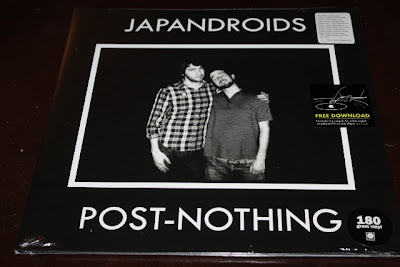.jpg)
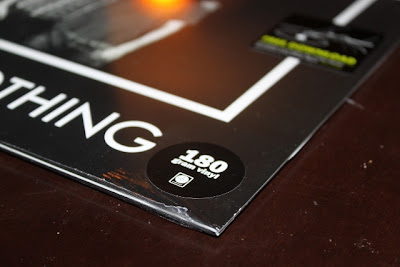.jpg)
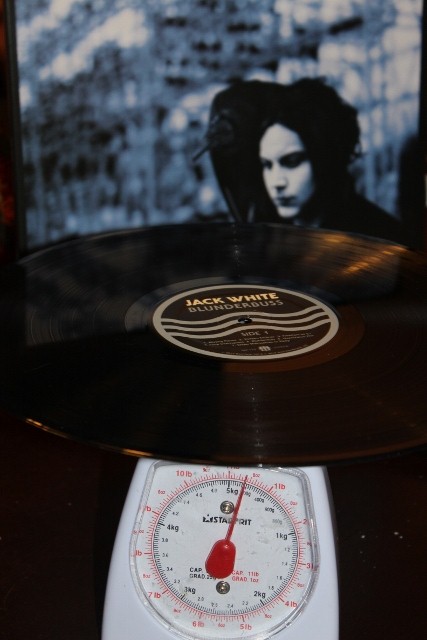.jpg)
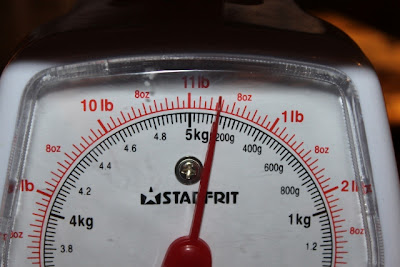.jpg)
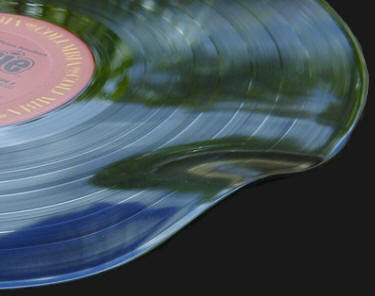


No comments:
Post a Comment
Note: Only a member of this blog may post a comment.